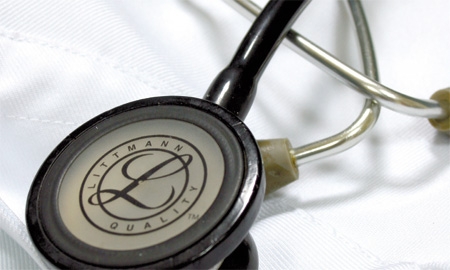With over 7,000 islands comprising the Philippine archipelago, extending healthcare services to all citizens can be quite challenging. Many Filipinos have traditionally been neglected in the national healthcare system, which although considered of a good standard, simply lacks the resources to reach the more remote, and poorer, areas.
“Unfortunately, a large part of the population is living in extreme poverty, even as far as healthcare is concerned. On a national scale we have trained many nurses and we have doctors, but not in all areas. This lack of healthcare workers and facilities must be changed,” explains Secretary of Health Dr. Enrique T. Ona. “We need to improve our rural healthcare units, equipping them with the necessary manpower, nurses and midwives.”
Currently, the Department of Health (DOH) has 72 larger hospitals and around 2,000 smaller ones, which are complemented by an excellent private healthcare network. Filipino doctors and nurses are graduates from the top universities in the Philippines, and many have also acquired further credentials and training in the U.S.
As a result, the staff in both public and private health centers is highly educated, with some of the best doctors serving in the state hospitals. The major difference between the two comes down to the quality of facilities and technologies offered.
For those who do have health insurance, the healthcare system is “first class”, says Dr. Ona. Patients can find world-class quality healthcare at places such as MPIC’s nationwide network of premier hospitals, and at Asian Hospital and Medical Center, in the southern Luzon corridor of Metro Manila. Indeed, Asian Hospital is considered one of the best private hospitals in all of Asia.
As for insurance companies, the Philippines is home to various regional and global industry leaders. Sun Life Financial Philippines, part of the Canadian Sun Life Financial group, offers Sun First Aid, an affordable hospital income plan that offers benefits such as daily cash benefits during hospital confinement, which ultimately help defray the cost of hospitalization. The Philippine American Life and General Insurance Company (Philam Life) forms part of the over 90-year old pan-Asian AIA Group. Its Health 100 is the Philippines’ first health insurance product that provides a comprehensive range of living benefits up to the age of 100.
INTELLICARE IS THE LEADING HMO, OFFERING AFFORDABLE HEALTHCARE TO ITS 600,000 MEMBERS
COMPANIES, SUCH AS PHILAM LIFE AND SUN LIFE FINANCIAL PROVIDE EXCELLENT HEALTH INSURANCE PLANS, WHILE ASIAN HOSPITAL AND MEDICAL CENTER RENDERS WORLD-CLASS HEALTHCARE SERVICES AND FACILITIES |
Those without private health insurance, of course, rely on state-funded hospitals and health centers, which are the target of the Aquino administration’s reforms to ensure universal healthcare. There is, however, another important segment between the poorest and wealthiest, covered by health maintenance organizations (HMOs), such as
IntelliCare, the largest Philippine HMO.
“We provide programs and innovative products and services to improve the delivery for healthcare services for those who can pay a portion for themselves,” explains Mario M. Silos, president of IntelliCare. “We cannot focus on those on the poverty line; this is the government’s function.”
Mr. Silos says that while IntelliCare supports the government in its move towards micro-insurance, especially within the poor rural areas, it is also a partner of the private sector’s CSR projects. “We really need to focus on this as in the long run it not only expands our market, but it also temporarily allows us to focus our expertise on areas that can use our help,” he comments. “We’re a member of the Philippines Business for Social Progress and a lot of corporations are very happy to support different projects.”
Established in 1995, IntelliCare today has more than 600,000 members and a network of more than 12,000 physicians and medical specialists, nearly 800 reputable hospitals, clinics, diagnostic centers and other first-class medical institutions.
The sheer size of the HMO has given its members an economy-of-scale advantage, even in the more remote areas. “In the old system people were too afraid to go to their providers, as they could not afford it. The law of large numbers allows us to maintain a structure that permits patients to access these facilities. We provide support to the providers and allow sustainability but we also allow the population to access this and provide them with better health,” says Mr. Silos.
“Our members must have access to providers and we’ve made sure we blanket them with an extensive network that allows them to use their IntelliCare card wherever and whenever they need it,” adds the leading HMO’s president.

0 COMMENTS